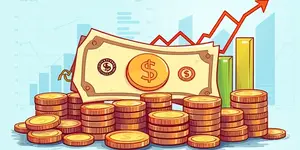
In today’s fast-paced markets, distinguishing genuine opportunities from sensational headlines isn’t optional—it’s essential.
As financial news cycles accelerate, investors face a barrage of conflicting narratives. From AI breakthroughs to ESG mania, every trend is billed as the next big wealth driver. Yet without a clear framework for analysis, emotion and anecdote can easily overshadow facts.
To navigate this landscape, one must ground decisions in rigorous quantitative analysis and resist the allure of unsubstantiated promises. This article examines the latest data, exposes recurring myths, and offers practical guidance for maintaining discipline in turbulent times.
The surge in exchange-traded funds (ETFs) encapsulates today’s low-cost, broad-market enthusiasm. In 2024 alone, 757 new ETFs launched, marking a 46% year-over-year increase. Combined assets under management now exceed $10 trillion, driven by institutional buyers seeking efficient index-linked exposure.
Meanwhile, private equity rebounded impressively, with buyout deals rising 37% to $602 billion in 2024. Average deal size climbed to $849 million, and megadeals above $1 billion accounted for 77% of total value. However, fundraising declined for a third straight year, underscoring persistent capital discipline among limited partners.
Public markets also delivered robust returns: the S&P 500 returned 23% in 2024, propelled by technology giants known as the “Magnificent 7.” This performance narrowed the ten-year return gap between private equity and public equities, though regional disparities remain.
*Reflects net internal rate of return
Despite volatility in early 2025, 64% of retail investors remain confident in their portfolios. Nearly half of self-directed traders treat market dips as buying opportunities, revealing a disconnect between sensational headlines and individual behavior.
Younger, less experienced investors tend to exhibit exuberance, expecting performance to improve regardless of economic signals. In contrast, seasoned participants grow more cautious over time, aligning expectations with historical averages.
Surveys highlight a stark divergence between "hard" economic indicators—solid job growth, cooling inflation still above 2%—and "soft" sentiment metrics, which dipped to crisis-era lows in April 2025. This emotional whiplash underscores the need for long-term disciplined investment mindset, rather than reacting to each new data point.
The belief that “this time is different” resurfaces with every technological breakthrough. AI advancements in 2024–25 echo the internet boom of the 1990s, fueling expectations of unrivaled returns. Yet history teaches that innovation cycles include both tremendous gains and painful corrections.
Similarly, ESG and alternative assets attract significant capital. Forty-four percent of family offices plan to boost real estate allocations, while art, vineyards, and luxury collectibles draw wealthy investors. Though appealing, these niches carry risks: illiquidity, narrow markets, and shifting regulations.
By separating data-driven investment themes from fleeting hype, investors can allocate capital more prudently.
Central banks remain in “higher for longer” mode on interest rates, surprised markets by pausing expected cuts and hinting at further hikes. Geopolitical uncertainty—from supply chain disruptions to election cycles in major economies—adds layers of risk.
Under this backdrop, real assets emerge as stabilizers. Private credit fundraising hit $123 billion in 2024, up 3% year-over-year, and direct lending helps fill gaps left by traditional banks. Investors seeking income and inflation protection allocate to infrastructure, commodities, and select real estate sectors.
Understanding policy dynamics and global tensions is critical. A balanced perspective on risk must incorporate both economic forecasts and geopolitical scenarios.
Top performers consistently apply these practices:
They also employ robust portfolio risk frameworks to monitor concentrations. Rather than chasing the latest theme, they emphasize allocations with proven drivers: demographics, sustainable cash flows, and historical resilience.
In an age of information overload, skepticism is a superpower. By anchoring decisions in empirical evidence and acknowledging behavioral biases, investors can avoid the traps of sensationalism.
Key takeaways:
Ultimately, sustainable wealth creation rests on patience, disciplined execution, and an unwavering commitment to evidence-based investment principles. Rise above the hype, and let facts chart your course.
References













